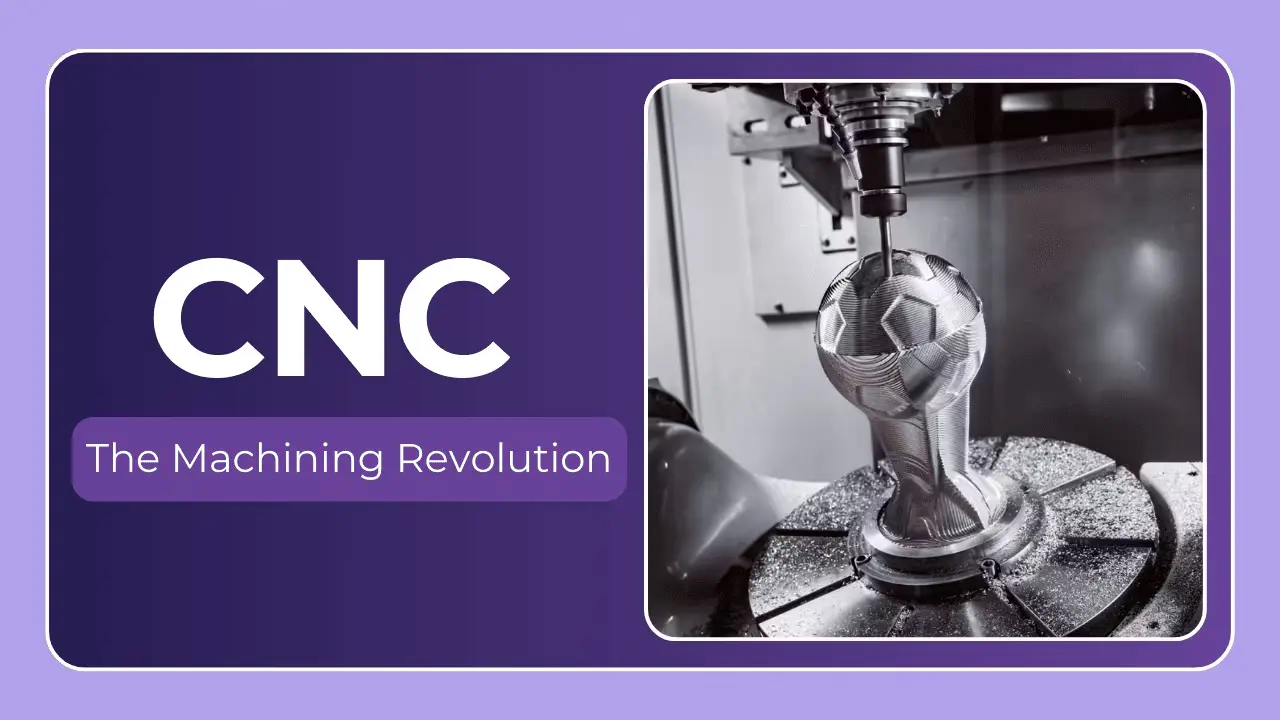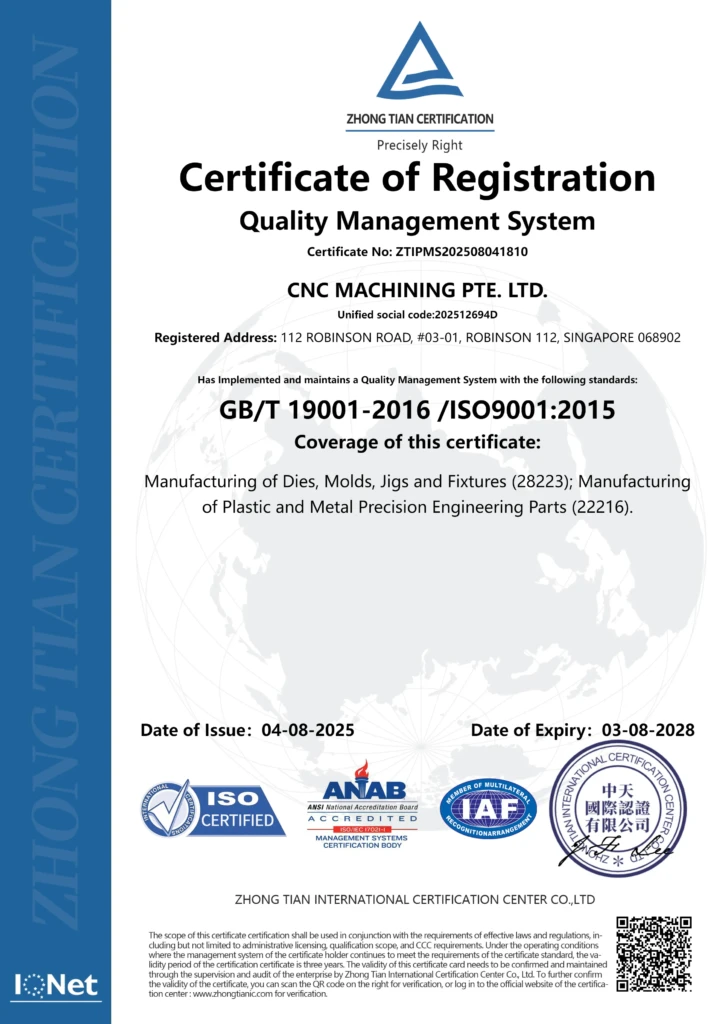A Comprehensive Guide to Production CNC Machining: From Design to Delivery
In today’s manufacturing landscape, achieving precision, repeatability, and efficiency are paramount. Production CNC machining has emerged as the cornerstone of modern manufacturing, bridging the gap between innovative design and tangible, high-quality parts. Whether you’re prototyping a new product, scaling up for limited runs, or requiring high-volume production, understanding the nuances of this process is crucial. This guide will delve deep into the world of production CNC machining, covering everything from design considerations and material selection to process optimization and finishing techniques. We’ll also touch on how a specialist like CNC MACHINING PTE. LTD in Singapore can elevate your manufacturing process.
What is Production CNC Machining? A Step Up From Prototyping
While prototyping CNC machining focuses on validating designs and creating small quantities, production CNC machining is geared towards consistently manufacturing parts at scale. This means optimizing the entire process – not just the machining itself – for efficiency, cost-effectiveness, and consistent quality. It’s about establishing a repeatable workflow that delivers identical parts, time after time. Key differences include:
- Higher Volumes: Production runs generally start in the dozens and scale into the thousands or even millions of parts.
- Process Optimization: Greater emphasis on tooling selection, cutting parameters, fixturing, and automation to minimize cycle times and maximize efficiency.
- Quality Control: Rigorous inspection procedures are implemented throughout the production run, often using Statistical Process Control (SPC) to monitor and maintain tolerances.
- Dedicated Fixtures: Custom fixtures are frequently designed and manufactured specifically for the part and the production volume, ensuring secure and repeatable positioning.
The CNC Machining Process: A Deeper Dive
Let’s break down the typical steps involved in a production CNC machining project:
-
Design for Manufacturability (DFM): This is arguably the most crucial step. DFM analysis involves reviewing your CAD model from a manufacturing perspective. Can the part be efficiently machined? Are there features that are excessively difficult or expensive to produce? DFM identifies potential problems before production begins, saving time and money. Things to consider during DFM:
- Tolerance Stack-Ups: Ensuring tolerances are realistic and achievable.
- Minimum Feature Sizes: Avoid features that are too small to be reliably machined.
- Corner Radii: Sharp internal corners are difficult to machine. Adding radii improves tool life and surface finish.
- Material Selection: Choosing a material appropriate for the application and machinability.
- Wall Thickness: Uneven wall thickness can lead to warping during machining.
-
Programming (CAM): Once the design is finalized, a Computer-Aided Manufacturing (CAM) software package is used to generate the toolpaths that the CNC machine will follow. This involves:
- Importing the CAD Model: The CAM software reads the 3D model of the part.
- Tool Selection: Choosing the appropriate cutting tools based on the material, geometry, and desired surface finish.
- Creating Toolpaths: Defining the paths the tools will take to remove material. This often involves multiple passes and different strategies (roughing, semi-finishing, finishing).
- Post-Processing: Converting the CAM data into a machine-specific code (G-code) that the CNC machine can understand.
-
Setup & Fixturing: This is where the part is securely mounted to the CNC machine’s table. Proper fixturing is critical for accuracy and repeatability. Techniques include:
- Vises: Common for holding simple prismatic parts.
- Clamps: Versatile for a range of shapes.
- Custom Fixtures: Designed and manufactured specifically for the part, offering maximum accuracy and repeatability.
- Pallet Systems: Allow quick and efficient changeovers between parts, minimizing downtime.
-
Machining: The CNC machine executes the programmed toolpaths, removing material to create the desired part geometry. Different machining processes are used depending on the part’s complexity and the material:
- Milling: The most common CNC process, using rotating cutting tools to remove material. Can be 3-axis, 4-axis, or 5-axis.
- Turning: Used for creating cylindrical parts, with the workpiece rotating while the tool cuts.
- Drilling: Creating holes with precision.
- Tapping: Creating internal threads.
- Reaming: Achieving precise hole diameters and finishes.
-
Quality Control & Inspection: Rigorous inspection ensures the parts meet specified tolerances and quality standards. This may include:
- Visual Inspection: Checking for cosmetic defects.
- Dimensional Measurement: Using calipers, micrometers, CMMs (Coordinate Measuring Machines), and other precision instruments.
- Statistical Process Control (SPC): Monitoring key process parameters to identify and correct deviations.
- Post-Processing & Finishing: Depending on the application, parts may require additional finishing operations:
- Deburring: Removing sharp edges.
- Polishing: Improving surface finish.
- Anodizing/Plating: Adding corrosion resistance or improving appearance.
- Heat Treating: Altering material properties.
- Powder Coating: Providing a durable and attractive finish.
Material Selection for Production Runs
The choice of material significantly impacts machinability, cost, and the final product’s performance. Common materials for production CNC machining include:
| Material | Typical Applications | Machinability | Cost | Key Properties |
|---|---|---|---|---|
| Aluminum (6061-T6, 7075-T6) | Aerospace, Automotive, Electronics | Excellent | Moderate | Lightweight, Strong, Corrosion Resistant |
| Stainless Steel (304, 316) | Medical, Food Processing, Marine | Good | Moderate to High | Corrosion Resistant, Durable, Hygienic |
| Steel (1018, 4140) | Automotive, Industrial Machinery | Moderate | Low to Moderate | High Strength, Hardness, Wear Resistance |
| Brass (C36000) | Plumbing, Electrical Connectors | Excellent | Moderate | Conductive, Corrosion Resistant, Malleable |
| Titanium (Grade 5) | Aerospace, Medical Implants | Challenging | High | High Strength-to-Weight Ratio, Corrosion Resistant |
| Plastics (Delrin, PEEK, Acrylic) | Consumer Products, Automotive | Good to Excellent | Low to Moderate | Lightweight, Chemical Resistance, Versatile |
The Role of 5-Axis CNC Machining in Production
While 3-axis machining is sufficient for many parts, 5-axis CNC machining unlocks capabilities for complex geometries that are otherwise impossible or require multiple setups. This leads to:
- Reduced Setup Times: Machining multiple sides of a part in a single setup.
- Improved Accuracy: Eliminating repositioning errors.
- Complex Geometries: Producing intricate shapes with high precision.
- Better Surface Finish: Allowing for optimal tool orientation.
Companies like CNC MACHINING PTE. LTD specializing in five-axis machining are well-equipped to tackle demanding production projects that require these advanced capabilities.
Optimizing for Production Efficiency
Beyond the core machining process, several factors contribute to overall efficiency in production CNC machining:
- Toolpath Optimization: Minimizing tool travel and cycle times.
- Coolant Management: Effective coolant delivery improves tool life and surface finish.
- Machine Maintenance: Regular maintenance prevents breakdowns and ensures consistent performance.
- Automated Material Handling: Robotic systems can load and unload parts, reducing labor costs and increasing throughput.
- Data Analytics: Analyzing machining data to identify areas for improvement.
Why Choose CNC MACHINING PTE. LTD for Your Production Needs?
CNC MACHINING PTE. LTD in Singapore stands out as a premier provider of production CNC machining services. We offer:
- Advanced 5-Axis Capabilities: Tackling the most complex geometries with precision and efficiency.
- Comprehensive Material Expertise: Machining a wide range of metals and plastics.
- One-Stop Solutions: Providing complete services from design assistance to finishing and assembly.
- Rapid Turnaround: Delivering parts quickly without compromising quality.
- Competitive Pricing: Offering cost-effective solutions for your production needs.
- Stringent Quality Control: Ensuring every part meets your exact specifications.
Conclusion: Investing in Precision and Partnership
Production CNC machining is a powerful tool for manufacturers seeking precision, scalability, and efficiency. Success hinges on thoughtful design, careful material selection, optimized processes, and rigorous quality control. Partnering with a reputable and experienced CNC machining provider like CNC MACHINING PTE. LTD can be the key to unlocking your production potential. We don’t just manufacture parts; we provide solutions. Contact us today to discuss your project and discover how we can help you transform your designs into reality – reliably, efficiently, and cost-effectively. Don’t hesitate to customize your precision parts now at the best price! The future of your product starts with the precision of its components.




